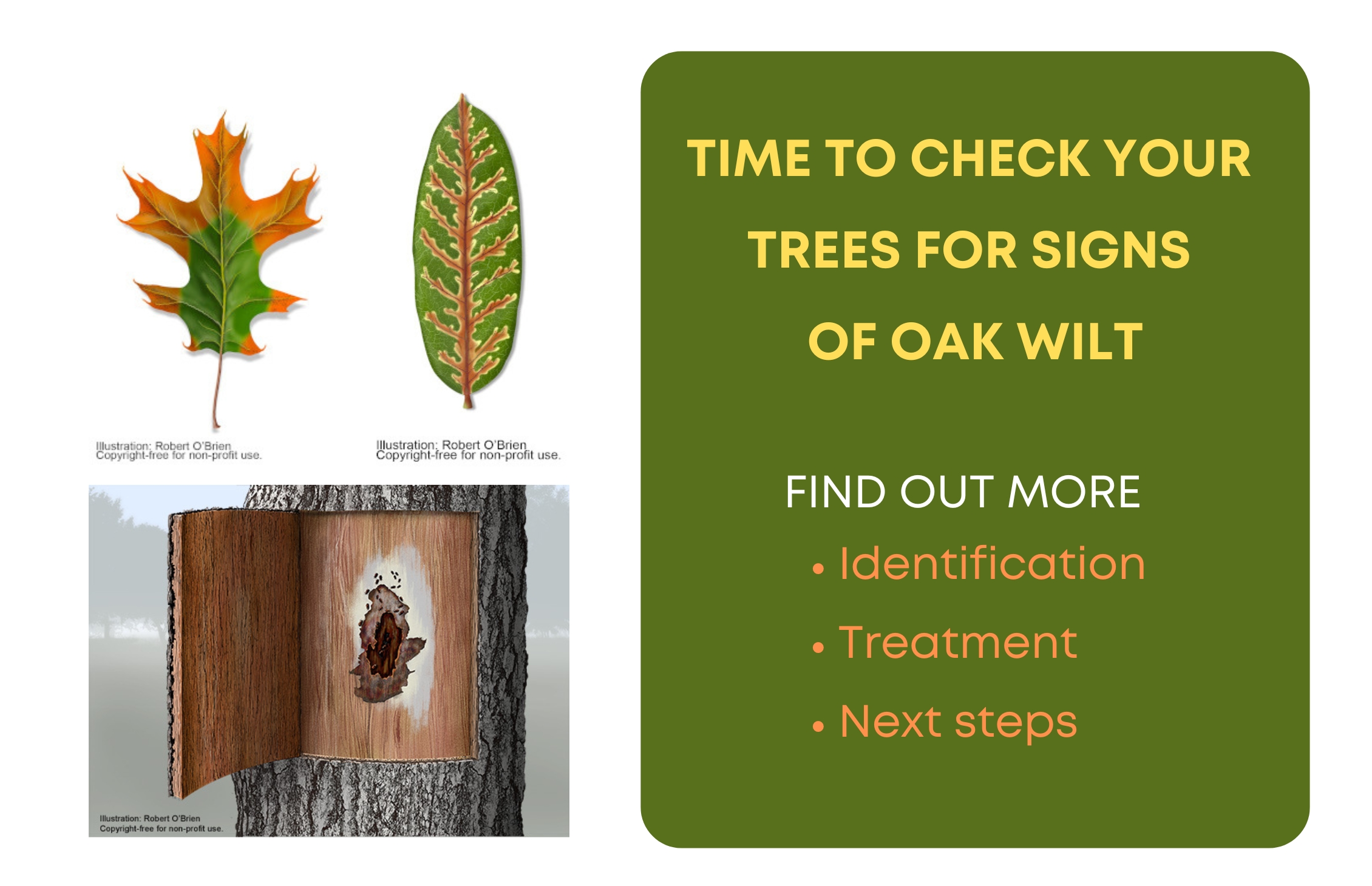Check your trees for Oak Wilt!
Last spring, oak wilt was detected in our neighborhood in the 800 blocks of Christopher and Columbus, as well as on a few trees on Bouldin Avenue and South 3rd. It is now time to have all neighbors check their trees again to see if and how the disease might have spread. The new greenery will make it very easy to spot veinal necrosis – the tell-tale sign of oak wilt. A helpful source is the Texas A&M Forest Service website: texasoakwilt.org
Some background: The oak wilt fungus is spread above ground by nitidulid beetles that carry sap from one tree to another, or underground by connected root systems. It can also be spread by moving infected (fire) wood from one area to another. Spread through improperly infected tree trimming equipment is rare, but can happen.
Once a tree is infected, it can generally not be saved; however, the infestation can be limited by trenching around the affected area to disrupt root connections – this condemns the trees inside the trenched area – as well as injecting a fungicide into adjacent healthy trees to prevent their infection. The fungicide might also extend the life of newly infected trees, but it will not cure them. The earlier an infection is identified, the better chances for treatment are.
Last year, BCNA hired an ISA (International Society of Arboriculture) oak-wilt certified arborist to inspect trees in the vicinity of the infected one to determine how far the disease had spread; they assessed more than 170 oaks. Trenching this large area would have been cost-prohibitive; it also would have taken too long to obtain each property owner’s permission. Based on our consultant’s and the City’s arborists’ recommendation, we opted to encourage all neighbors within a 150-foot radius of the infections to inject their oaks with the fungicide propiconazole, which acts like a vaccine against the disease. The fungicide can also be applied to trees that have already been infected, provided that they have lost no more than 30% of their canopy.
This does not prevent the further spread of Oak Wilt but it will protect oaks in its path. However, it means that we need to do yearly assessments to see whether the disease has spread and where.
In 2023, we were able to negotiate neighborhood discounts for the fungicide treatment with two tree companies and also offered a cost-share out of BCNA Parks funds; we are prepared to do so again, should there be new manifestations of oak wilt.
Please inspect your oak trees for the following signs:
Affected Oaks
Texas Red Oaks are most susceptible to the fungus. Infection can be spotted from a distance by bright, autumn-like leaf coloration in contrast to the surrounding greenery. Infected trees never survive and often die within 4 to 6 weeks following the initial appearance of symptoms.
White Oaks/Post Oaks are more tolerant of the fungus, but can still be infected. Fungus generally does not spread to adjacent trees, but occasionally will.
Live Oaks face intermediate danger, but are most seriously affected because of their connected root systems which facilitates spreading. These can be identified by loss of canopy and green leaves with clearly visible brown veins. Trees can defoliate within 3 to 6 months of infection and die; others will linger for years.
If you have any concern about your tree(s), please notify the Park Committee at parks@bouldincreek.org and consider hiring an oak-wilt ISA certified arborist to advise you. The Texas ISA Chapter maintains a list that can be searched by location: https://isatexas.com/for-the-public/texas-oak-wilt-qualified-arborists/
Finally, the best way to prevent oak wilt is to avoid tree trimming from February through June, when sap-carrying beetles are most active. Instead, have them trimmed in the coldest part of the winter or the hottest of the summer. At whatever time it is done, though, it is essential to paint fresh wounds immediately.

